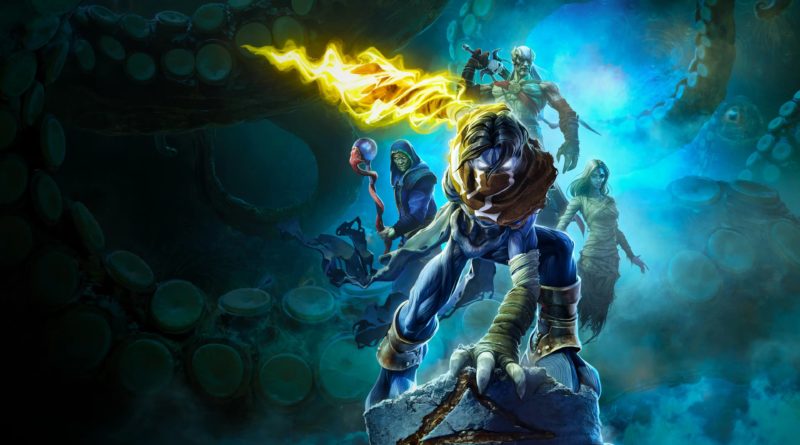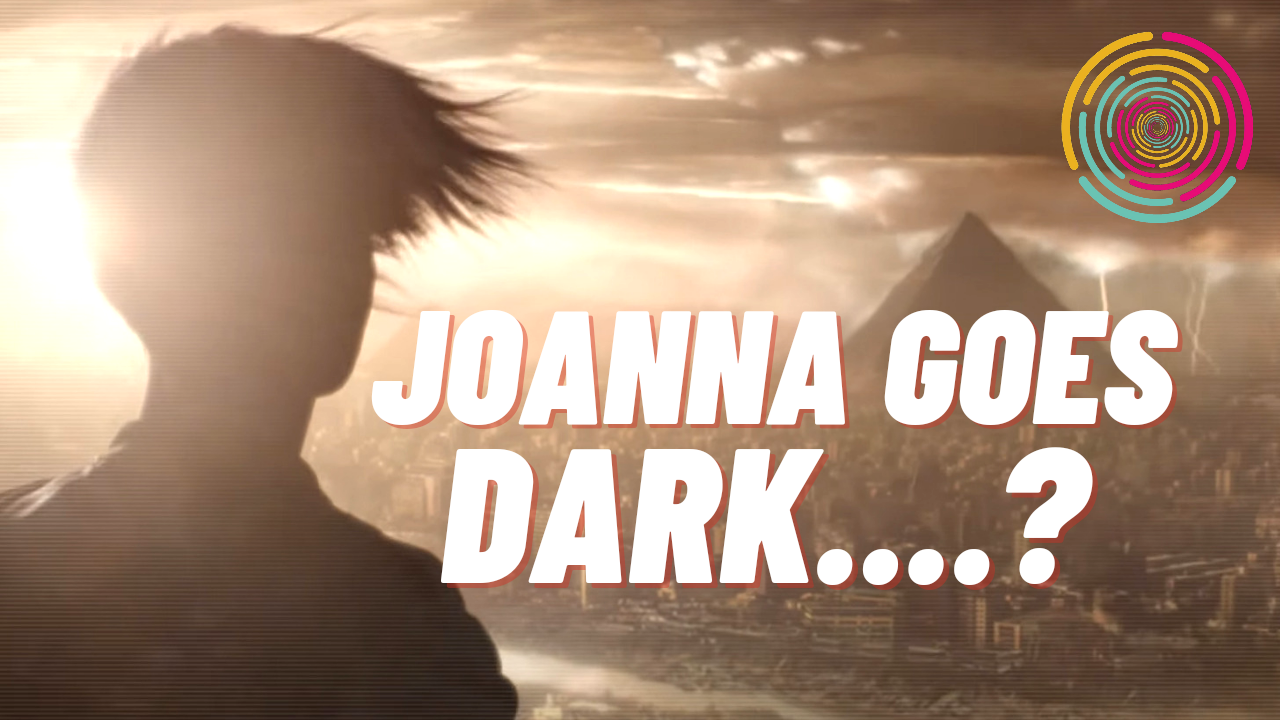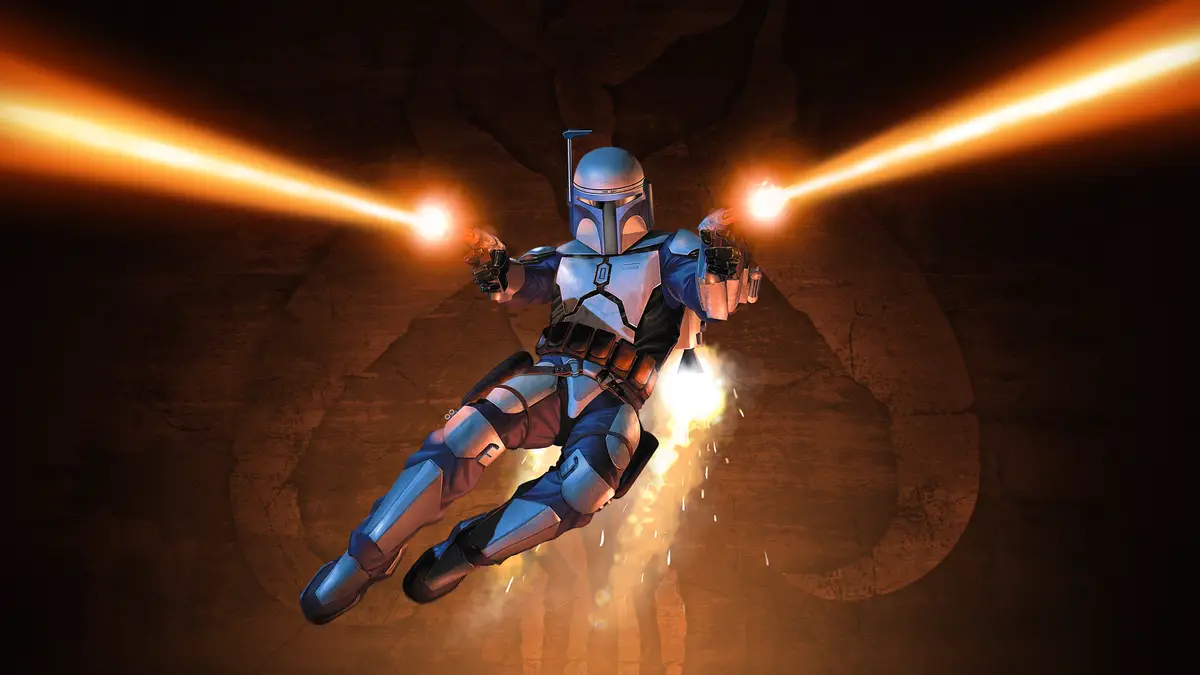Legacy Of Kain: Soul Reaver 1 & 2 Remastered Review (PS5) – Revenant Reverence
If there was ever a perfect analogy for things not dying and being resurrected in gaming, then Legacy of Kain would be it. A series that started as a top-down PlayStation romp with Blood Omen, it bloomed into a multi-format adventure featuring vampires, gods and time travel with Soul Reaver onwards. A legacy indeed.
Having been dormant since 2003, with Defiance being the last title released, fans have been clamouring for anything of the series. From the failed online title Nosgoth, to the leaked Dead Sun, everything’s been dormant… until now. Following an Evercade release of Blood Omen, we’ve finally been treated to the Soul Reaver titles, the interim between Blood Omen and Defiance.
So, like any good port/remaster, has time been kind to Legacy of Kain? Is it worth sinking your teeth into, or does it just suck? Let’s find out.
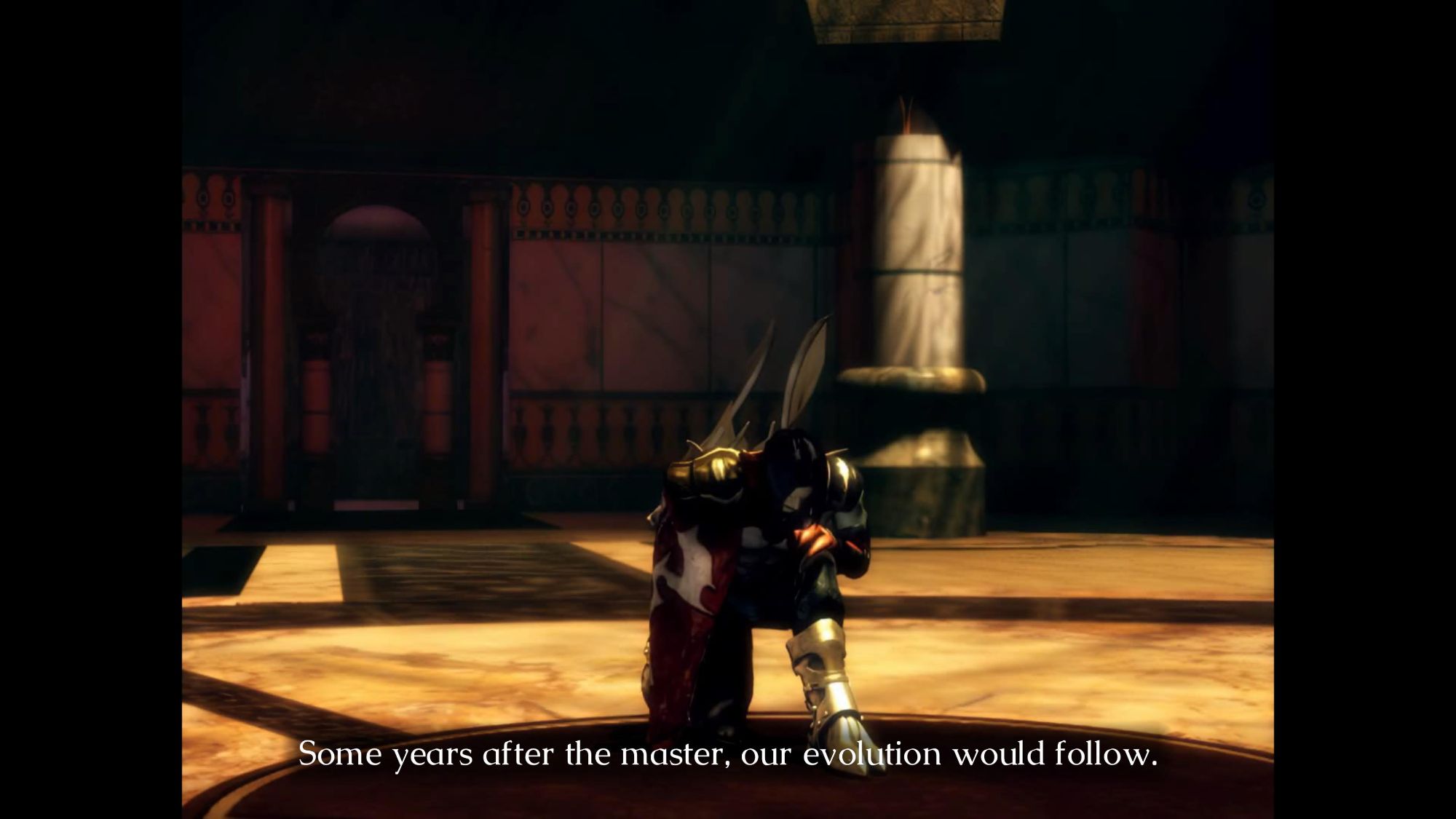
Evolved To Fail
Whilst this would normally be a story recap, the story across the Soul Reaver games is far too broad to break down over a few paragraphs. However, allow me to give you, you lucky reader, the abridged two-game version.
Kain, of Blood Omen fame, is the once-human vampire that defied fate, before going on to rule the vampire clans and lands of Nosgoth over the next several centuries. But that “peace”, to put it mildly, is shattered when his lieutenant Raziel takes the lead in the vampiric evolutionary race. That is to say, he grows wings.
Rather than relish this new step in evolution, Kain has Raziel executed and cast into the Lake of the Dead. But as is the narrative fate, this doesn’t kill Raziel, as he is instead brought back as a revenant, a sort-of-not-really-a-vampire. Tasked by the Elder God to destroy Kain, it all sounds pretty straightforward as revenge stories go…
It’s not, but to give it away would be spoiling it, wouldn’t it? Suffice to say there’s some betrayals, alterings of fate(s) and other noodle-scratching shenanigans.
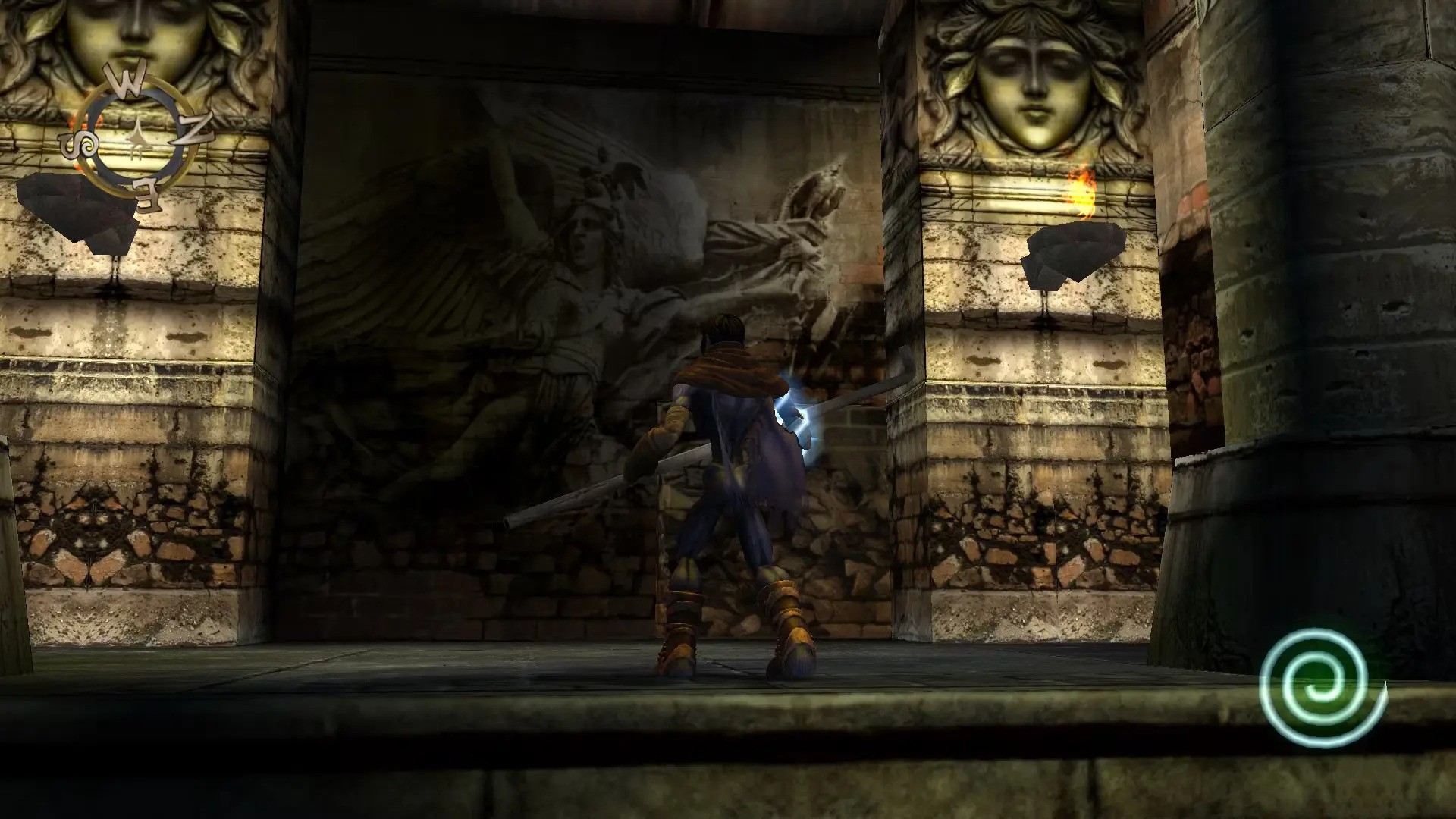
Tomb Evader
Back in “the day”, with Lara Croft riding high, a lot of action-adventure games were compared to Tomb Raider. Quite fitting really, what with them both being Crystal Dynamics properties. But whilst it’s easy to call anything with some dungeon-like exploring a Tomb Raider style, it also shares a lot more in common with the 3D Zelda style, namely Ocarina of Time. Yes, I’m aware I also said this in my Darksiders review, but it will make sense here too.
You see, the mechanic in Zelda is that players would find a specific item in a dungeon, and that would be key to finishing said dungeon and the boss of it. Like the hookshot, or boomerang. In the Soul Reaver titles, it’s similar but not exact. The way around this is having Raziel hunt down his former kinsman, those that stood by Kain after he betrayed Raziel.
The bulk of the first game, at least, is hunting these former allies down, with most being warped by time too. After defeat, Raziel gains the ability coveted by his fellow not-man, allowing him that use.
So say there’s a grate that is pretty darn solid in the living world, or a body of water that would normally vapourise or undead hero, these soon become passable. But the other unique mechanic is the dual world gameplay present in the titles.
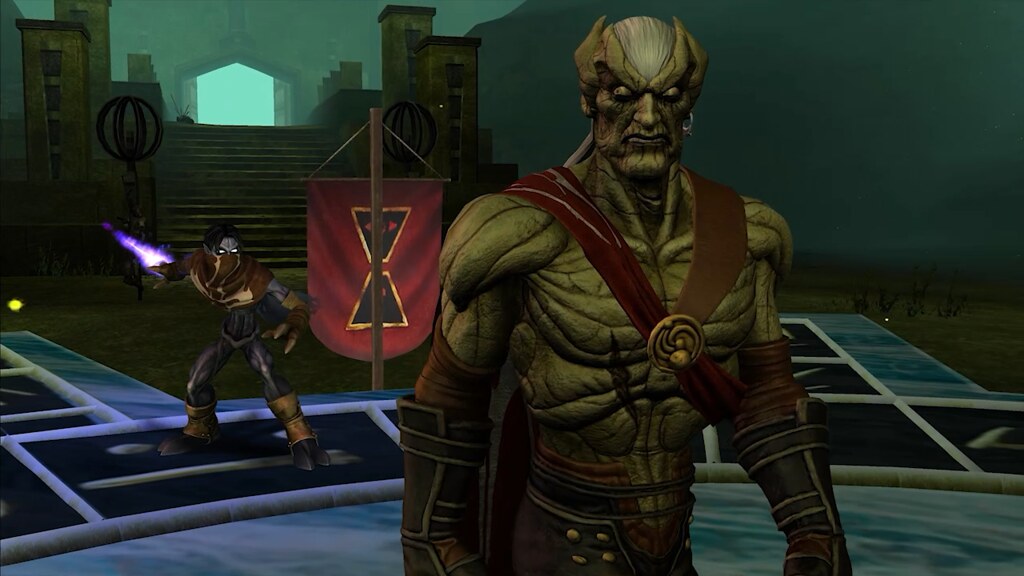
Perfectly Misaligned
Despite being betrayed and left for dead, being undead isn’t quite so bad as it used to be. Well, at least not for Raziel, perhaps not the dozens of mutated vampires that roam the land. Anyway, what with being a death-defying revenant, Raziel has quite literally the best of both worlds.
Again to use a Zelda analogy, because write what you know, Soul Reaver employs a dual world mechanic. In his “natural” undead state, Raziel walks amongst the land of the dead. Water is intangible, whilst a lot of the ruin is more… destitute than it should be.
Conversely, reave enough souls and our boy in blue can traverse the barrier between living and dead. In this state, water will dissolve him like a goth Berocca, yet the world is more inhabitable. Well, it’s still all doom and gloom as a land under vampiric rule would be, but you get my point.
The trick to this dual world deduction is usually pretty obvious, but still equally cunning. A lot of it ties into Raziel’s obtained skills, making note of where certain inaccessible areas are, and using two paths of logic. The first is “Can I phase back to the dead world and walk across that now-intangible pond?” or “Do I need to come back when Raziel can swim?”. Oh yes, this is your Tomb Raider/Gex: Enter The Gecko old school cool: absolute bare minimum when it comes to hand-holding or indication markers.
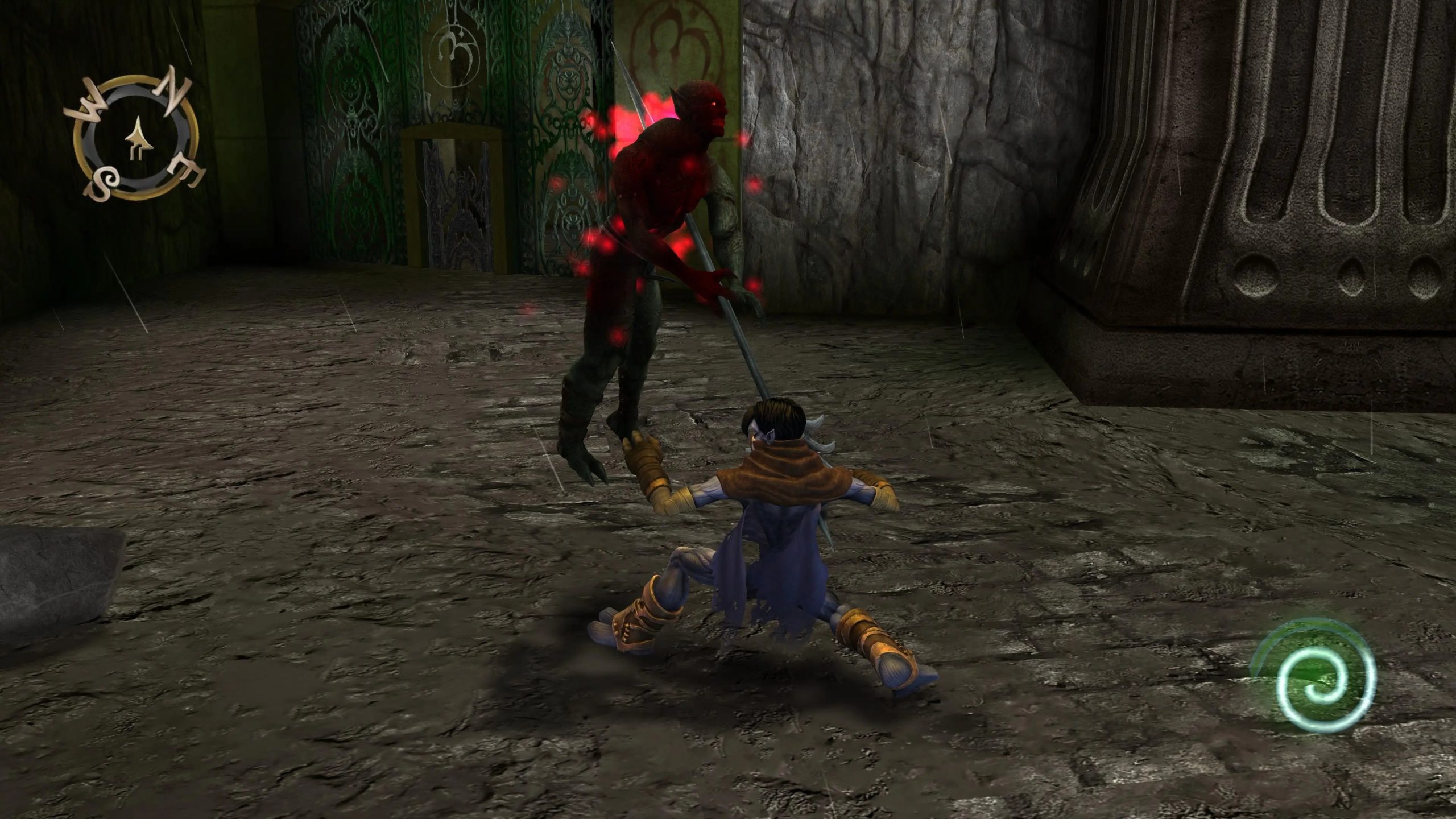
Raz The Impaler
The other sticking point in the Soul Reaver titles is their combat. For the uninitiated (and this isn’t really a spoiler), Raziel doesn’t actually “get” the titular ephereal/phantasm-y blade until some ways in. So prior to that, he’ll have to fight tooth and claw… except he has no lower jaw. Instead, this is where the environment and tactic come in.
Given that most of the enemies we fight are vampires, or six degrees of separation from, they can’t just be “killed”. Enemies can be pummeled into a dazed state, but they’ll need a coup de grace to off them completely. We’ve already established that they don’t like water, but a conveniently placed bonfire will also do the trick. Handy spiked wall-mounted torch bracket? Hmm, looks like a vampire coat rack to me, whilst he’s still wearing it. You get the gist.
The other is whatever’s closest to claw. The aforementioned torch is pretty handy, as are large wooden poles (think pre-cut stakes) or decorative spikey tridents and staves that are effective. The combat doesn’t offer a massive variety of ways to proper-dead the undead, but it’s a nice twist on the classic “just keep hitting” concept.
When Raziel does get the Soul Reaver, then yes, it does become formulaic, but with a twist. In the living world, this needs to be sustained by soul energy. Take too many hits and Raziel will lose the blade… and then be sent undead-world packing if he keeps getting smacked about. One on one fights aren’t so bad, but getting mobbed can soon tip the scales.
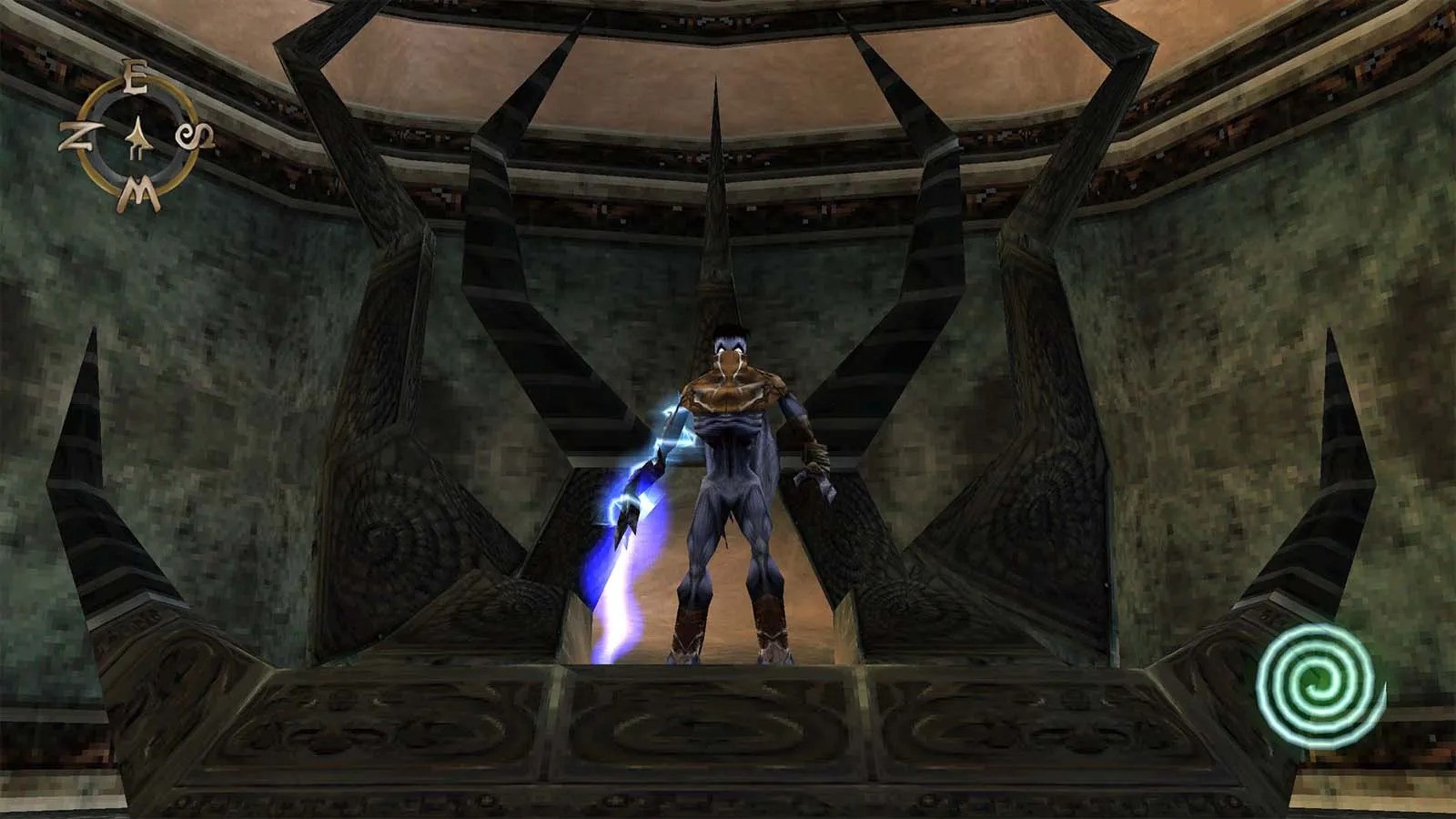
Kinda Sucks
Okay, that header sounds quite dramatic, but it’s thematic. However, it’s not completely without merit, it just depends on how liberal one wants to be with the salt. When it comes to remasters, we have to be prepared to take the rough with the smooth. Legacy of Kain: Soul Reaver 1 & 2 Remastered does exactly what it says on the tin, but in essence it is the same game.
Which means, unfortunately, that it comes with all the niggles and inconveniences that gaming had to put up with in 1999. For one, the complete lack of pathfinding will put many off. There’s learning to deal with it, and then there’s “Where in the netherworld am I actually going, o vague game direction?”. It doesn’t help that, despite unlocking warp gates to backtrack/explore, and a save anywhere function, the game will always start players back at the place of Raziel’s resurrection. Defenders will say it fits with the undying nature of the story, whereas I call it a gigantic pain in the ass.
There’s no real issues with the games themselves, but that’s a double-edged Soul Reaver: there’s nothing really re-vamp’d about them either. They’re just the same, warts and all, albeit with the option to toggle old/new graphics on the fly. In a general sense of all remasters, it all depends on how much one enjoyed them the first time around.
I know all too well how encompassing those nostalgia goggles are, believe me. And I’m far from suggesting than the Soul Reavers remasters are terrible. But you have to go in knowing that these are the same games as the were in 1999 and 2001, respectively. They are janky, the platforming a relic of the early full 3D era of gaming, the voice acting choppy and the cutscenes clunky. But again, if you’re all for this, you won’t be taken by surprise.
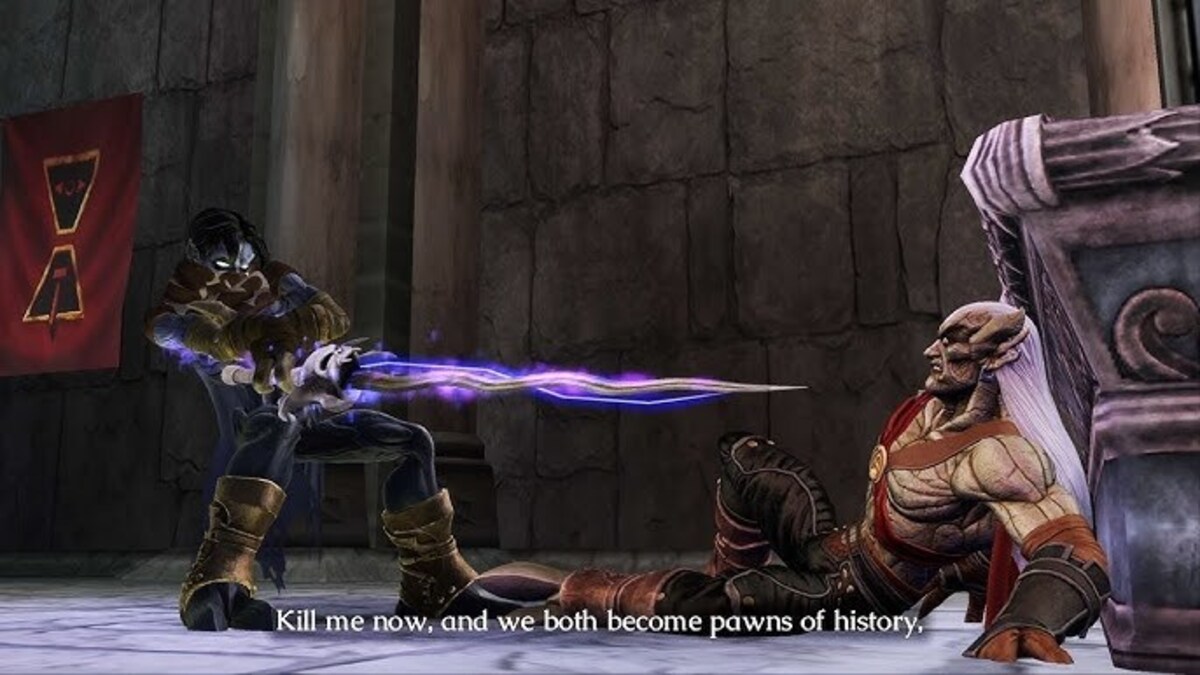
Bite Me
To conclude, and probably contradict the above, I was actually really happy to get back to the world of Nosgoth. Like many, I’ve been yearning for more of these, and hopefully the renewed interest will bring Defiance back. But I digress. At its core, Legacy of Kain: Soul Reaver 1 & 2 Remastered delivers what it says on the title. The adventures of the revenant Raziel against the controlling Kain are restored (well, sort of) to a modern audience.
Coupled with some bonus content in the form of in-game soundtracks, a map screen per game and, oddly enough, a cosplay gallery, it’s not unnecessarily padded. But it doesn’t need to be, as we’re really here for the games. As I said, they are literally the same as they were before, each a time capsule of the PlayStation 1 & 2’s capabilities in the flowing time of action-adventure focus.
If you want to get into Raziel’s… err, feet but with a newer, smooth graphical overlay then you’re at home. If you’re expecting something like a Dead Rising Deluxe Remaster scale of polish, then you’ll be disappointed.
At the end of the day, playing a grim-dark Zelda/Tomb Raider before Darksiders took on that mantle is fun, if dated. But if players want dated, either to reminisce or see how we did it back in the day, then this will do it. Go on, sink your teeth in… or suck it up, like Raziel has to.
Legacy of Kain: Soul Reaver 1 & 2 Remastered is available now on PlayStation 4 & 5 (reviewed on latter), Xbox One and Series S|X, Nintendo Switch and PC via Steam.
Developer: Crystal Dynamics
Publisher: Aspyr
Disclaimer: In order to complete this review, we were provided with a promotional copy of the game. For our full review policy, please go here.
If you enjoyed this article or any more of our content, please consider our Patreon.
Make sure to follow Finger Guns on our social channels –Twitter, Facebook, Twitch, Spotify or Apple Podcasts – to keep up to date on our news, reviews and features.
